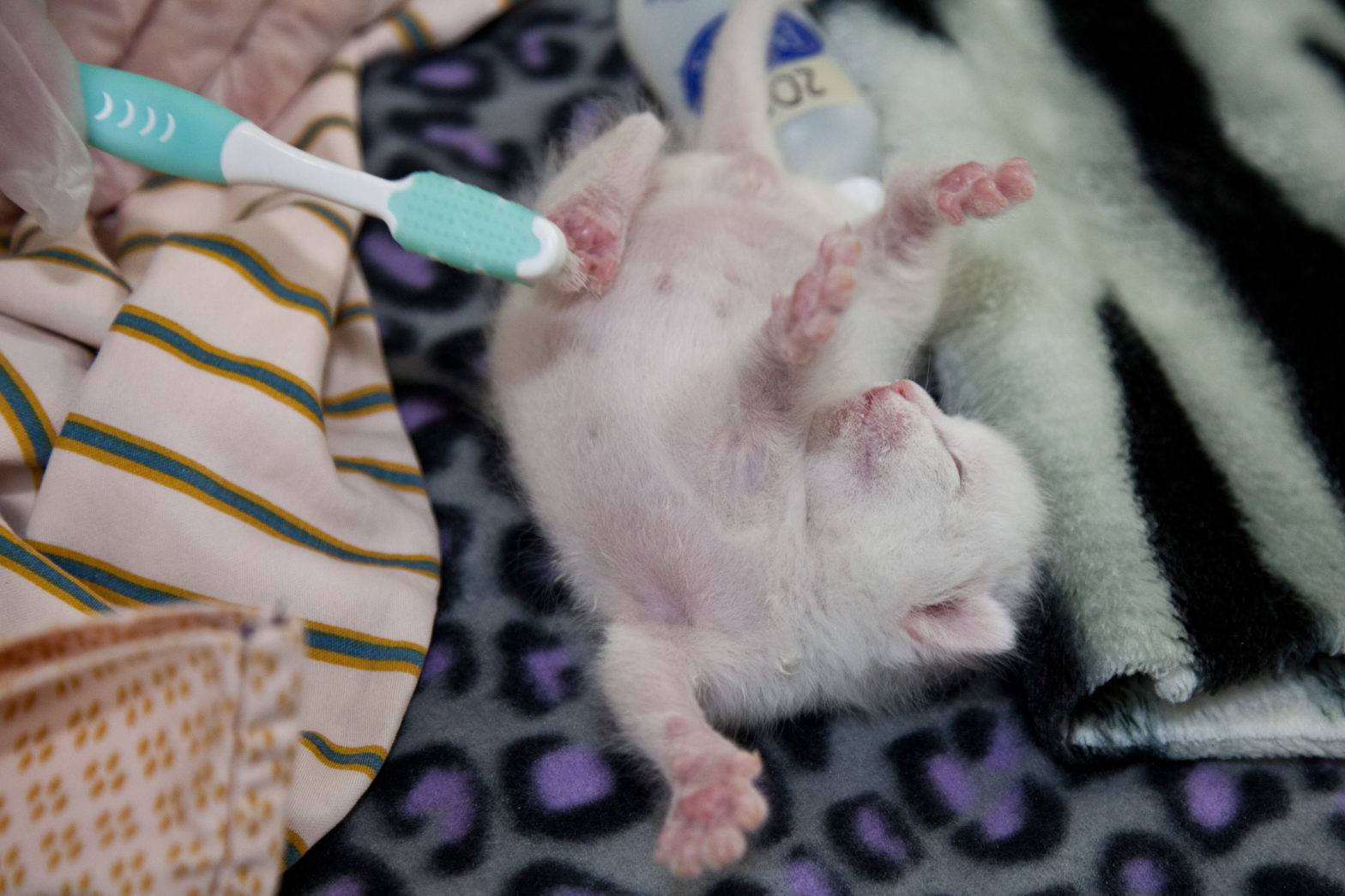Have you ever wanted an inside look at how shelters prepare young kittens for adoption? It’s a 24/7 process that requires many helping hands.
Orphaned kittens, some just days old, may never realize their good fortune of being rescued and transported to the San Diego Humane Society’s kitten nursery center.
Strategic steps taken by staff and volunteers to provide medical care, conduct enrichment activities, and provide nutrient-rich foods up the chances that these young felines will develop sweet temperaments that land them forever homes.
It’s all in a day’s – and often night’s – work for Jackie Noble, kitten nursery manager, and her team of staff and volunteers.
Building Bonds and Neurons
Many techniques used to boost confidence and mitigate fear in these young kittens may surprise you. For starters, litter mates stay together to form bonds. Solo orphaned kittens are paired together as soon as their eyes open.
“It’s important at this early age to help them learn to have a friend and interact,” says Noble, who has a master’s degree in zoology. “We are big on providing them lots of enrichment activities.”
Enrichment tools include the following:
* Using the bristles of human toothbrushes on the young kittens’ coats at feeding times. “We’ve learned that brushing young kittens with toothbrushes while they are eating helps them feel like a momma cat is grooming them,” says Noble. “The bristles on the skin feel much like the barbed texture on a cat’s tongue.”
* Providing small stuffed animals for the orphaned kitten to cuddle up with as well as fluffy baby blankets that emulate the soft fur and body heat of a momma cat.
* Shopping secondhand stores for brightly colored toys and items, including baby crib mobiles for kittens to swat, children’s doll furniture to climb on, and wicker baskets to nap in. “The beauty of these Easter baskets is that they have high sides, making our kittens feel safe inside while sleeping,” she says. “Kittens given opportunities to be playful, active, and work their muscles by climbing on the doll furniture are more likely to grown up to become healthy, happy, and contented cats.”
Physical Care and Socialization
Every effort is made to keep kittens comfortable and healthy. Thanks to donations, the nursery features three sinks operated by foot pedals to make bathing safer, smoother, and swifter for young kittens. “Low body temperatures in these little guys is a big concern, so these types of sinks make the process much quicker and effective,” says Noble.
By five weeks of age, kittens are placed in foster homes to be exposed to what Noble calls the real world in a controlled environment.
“In foster homes, our kittens get extra attention during a critical socialization period and exposed to real-life experiences, like kids running, dogs playing, and vacuums being used,” she says. “We find it is better for kittens to experience living in foster homes rather than spending their first eight weeks of life in a shelter. This really does up the average of them getting adopted.”
Training Staff, Volunteers, and Kittens
Each month, the San Diego Humane Society conducts Purr-fessional Development classes to staff and volunteers.
A popular topic deals with the right ways to handle energetic, athletic kittens. To discourage kittens from nipping hands, Noble teaches the importance of rewarding desired behavior (kittens who play nicely with wand toys) and ignoring unwanted behaviors (an occasional hand nip). Folks are also taught the important of being calm and encouraging when handling kittens to reduce chances of the kittens reacting with fear or stress.
“We educate our fosters that what seems sweet like a young kitten chasing their hand or running after their feet is not so cute – and can be dangerous – when that kitten turns into a 15-pound cat,” she says.
Staff and volunteers always wear gloves inside the nursery when handling kittens to reduce the chance of an infectious disease spreading. Orphaned kittens up to two weeks old are given blood plasma because they are too young to be vaccinated.
“This gives their immune systems a boost,” says Noble. “The blood plasma comes from cat donors.”
To help kittens become desensitized to being poked by a needle at a veterinary clinic, the staff pairs vaccination-giving time with mealtime. When the needle is injected, another staffer is purposely touching the kitten’s ears, paws, tails and back of neck as distractions.
“Whenever we give oral or injected medications, we always follow with a mealtime to make it more of a positive experience,” she says.
When kittens are adopted, the staff encourages pet parents to enroll their new feline friends in the shelter’s kitten kindergarten class. It meets once a week for four weeks.
“During kitten kindergarten, we give tips for people to practice at home on how to get their new kittens used to car rides, being in crates and getting weighed on scales so the veterinary clinic seems less scary to them,” she says.
Happy Ending
Noble shares her home with a pair of graduates of the kitten program – four-year-old Davey and two-year-old Oscar. The pair are close friends.
“Davey lost his eyes due to a bad upper respiratory infection when he was very young, but now he is 16 pounds, loves attention and being my lap cat,” describes Noble. “Oscar is not his seeing eye cat, but more of his buddy. The two love hanging out together.”
This article was reviewed/edited by board-certified veterinary behaviorist Dr. Kenneth Martin and/or veterinary technician specialist in behavior Debbie Martin, LVT.








